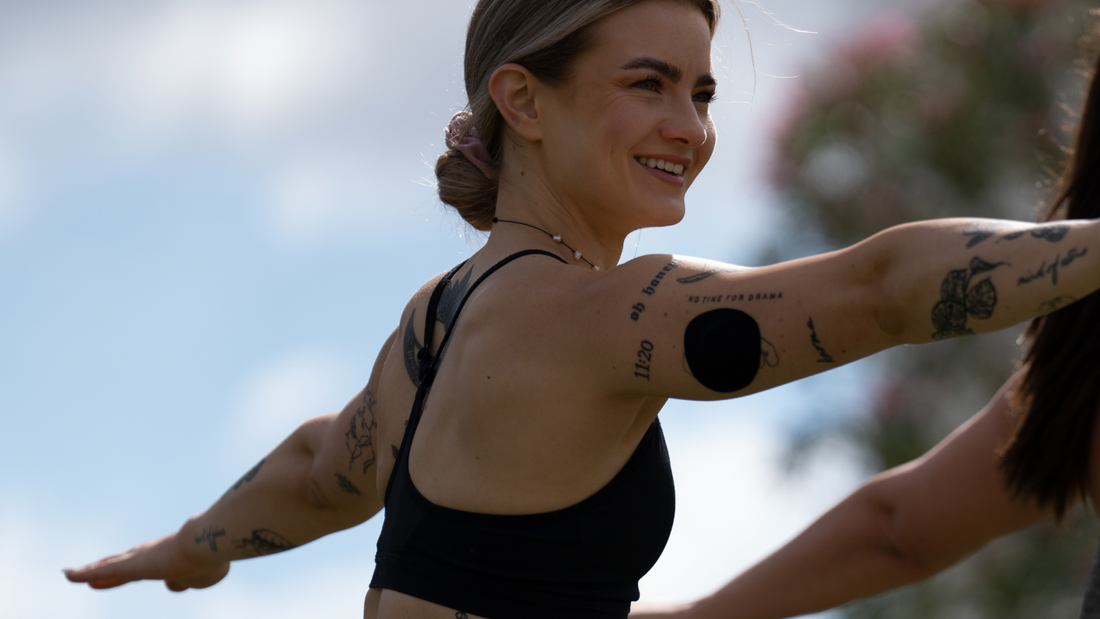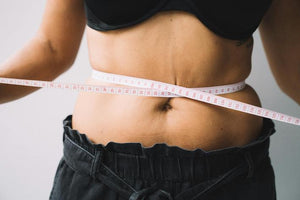There are so many good reasons to exercise . Doctors now even prescribe it. It's no surprise, then, that exercise affects your blood sugar levels, but your blood sugar levels also affect your response to exercise. In this article, you'll learn:
- How exercise and blood sugar are related
- Which types of workouts increase and decrease your blood sugar levels
- How to adjust your training to optimize your blood sugar levels
What is blood sugar or glucose?
First things first: The terms blood sugar and glucose level are synonymous. Here's why:
When you eat carbohydrate-containing foods, your body breaks them down into a type of sugar called glucose. Glucose and fatty acids are the body's main energy sources, and after a meal, the fat is stored and the glucose is released into the blood—hence the terms blood sugar or blood glucose. The body detects that glucose has entered the bloodstream and causes the endocrine system (the pancreas) to release insulin, which regulates glucose by causing cells to take it up for energy use and storage.

What can cause high or low blood sugar?
Low blood sugar (hypoglycemia) can occur if you don't eat enough carbohydrates, drink alcohol, are sick, or take certain medications.
High blood sugar (hyperglycemia) can occur from eating a lot of carbohydrate-rich foods, from lack of sleep , from insulin insensitivity, but also from stress , trauma, or a chronic illness. It can also affect how your body responds to exercise. Studies show that people with high blood sugar levels don't fully reap the health benefits of exercise.
To lead a healthy life, it is important to recognize the signs of high or low blood sugar levels.
Both low and high blood sugar levels are difficult to detect and can easily go unnoticed, so the conditions often go untreated. With a continuous glucose monitoring (CGM) device, you can see in real time how your diet, sleep, exercise, and stress levels affect your blood sugar. Monitoring and controlling your blood sugar levels is a great way to stay healthy and avoid metabolic disorders .

Why exercise is good for regulating blood sugar levels
When it comes to your health, exercise is one of the best things you can do. So, it should come as no surprise that exercise is effective at keeping blood sugar levels stable. Your body's muscles need glucose for fuel, and during exercise, glucose demand increases because our muscles are activated. Exercise also increases the body's insulin sensitivity, allowing insulin to work more effectively and reduce blood sugar spikes more quickly.
How does exercise affect blood sugar?
It's important to know that different types of exercise affect your blood sugar levels differently. How your blood sugar levels change during exercise can depend on the following factors:
- Blood sugar level before exercise
- The type of training (aerobic or anaerobic)
- The length of the workout
Intense (anaerobic) exercise is likely to cause your blood sugar levels to spike because it can release the hormone adrenaline, which stimulates the liver to release glucose more quickly.
In contrast, exercise at a steady pace and moderate intensity (aerobics - short duration) uses fat as the main energy source, which means that blood sugar levels remain stable.
Knowing how your body reacts to your workout can help you avoid blood sugar spikes or dips . For example, if you notice a sharp rise during a workout, you can pay attention to what you eat before or during your workout and how much fluid you consume. More on this below! Now let's explore which exercises lower or raise your blood sugar levels.

What are anaerobic exercises and how do they affect my blood sugar levels?
Anaerobic activities, such as interval training, are more intense and shorter, and will quickly leave you out of breath. When you exercise anaerobically, your body primarily uses glucose, meaning it draws on the glucose (glycogen) stored in your muscles and liver, which is why your blood sugar levels spike during these exercises to meet your body's needs. This also means that the spikes that occur during high-intensity exercise are nothing to worry about. Your body is responding as it should. That's what you want your body to do.
Examples of anaerobic exercises include: interval training, sprinting, weight lifting, strength training, spin classes, high-intensity interval training (HIIT), Pilates.

What are aerobic exercises and how do they affect blood sugar?
Aerobic exercise is activity that increases your heart rate at a steady pace and moderate to low intensity. This is exercise where you can generally carry on a conversation with other people. Unless you're swimming, of course ;) During aerobic exercise, the body doesn't need to draw on glucose stores (glycogen) in the liver, meaning the body doesn't need to generate immediate energy boosts but instead draws on energy from fats. This means your blood sugar level generally stays the same or even drops slightly.
Examples of aerobic exercises include: swimming, cycling, jogging, walking, rowing, zone 2 cardio, Ashtanga, Vinyasa, power and hot yoga
Exercising on an empty stomach: Is fasting exercise good for my blood sugar?
Fasted training means exercising on an empty stomach. You achieve this by fasting overnight and exercising first thing in the morning or before your first meal. The idea is that by the time you exercise, your body has no glucose stores left and can access stored fat more easily than when fasted. However, this practice can cause your blood sugar levels to drop during exercise. This drop is a sign that your body is underpowered (making recovery difficult). As a result, you put a lot of strain on your body, lose fitness instead of gaining it, and increase your risk of injury and stress levels .

How the menstrual cycle affects your training and blood sugar levels
Most women are aware that their bodies go through different phases during the menstrual cycle . However, many are unaware of the profound impact these fluctuations have on their bodies. Sleep, sexual function, and metabolism are all connected to the endocrine system. The endocrine system controls not only our blood sugar levels but also the menstrual cycle. This explains why hormonal phases can influence glucose metabolism during exercise. In other words, a workout that seemed easy in one phase, resulting in a flattening of blood sugar levels, may seem more difficult in another phase and result in higher blood sugar levels.
The hormones released during the different menstrual phases appear to influence the reliance on glucose as an energy source, as well as the glucose response to food and stress. Hello Inside has developed the Hello Hormones program to show how your blood sugar levels change throughout your cycle, allowing you to optimize your training and glucose response.

Our tips:
We've put together some tips on how to optimize your blood sugar levels based on your workout and vice versa.
You can maximize the positive effects of exercise on your blood sugar levels by incorporating the following tips into your training program:
General measures:
- Choose an exercise that fits your menstrual cycle to feel your best.
- Pay attention to the drop in blood sugar and recharge your batteries (preferably with a mix of protein and carbohydrates, e.g. yogurt with berries).
- If your workout lasts longer than 90 minutes, prepare a small snack to eat during your workout (e.g., a banana or 1-2 energy gums).
- Incorporate a fasted workout by doing 15-20 minutes of HIIT or aerobic exercise in the morning.
- If you exercise in the evening, choose a gentle workout so you can sleep and recover better. (Bonus: Good sleep has a positive effect on blood sugar levels the next day.)
How to prevent your blood sugar level from getting too low:
- Move your body by taking a 15-minute walk, taking the stairs, or getting up from your desk every 20 minutes to stretch.
- Avoid hot baths, saunas and steam baths after training
- Do not exercise later than 2 hours before bedtime
To avoid blood sugar spikes:
- Do light or moderate exercise before the first meal
- Try taking a walk after meals: Studies show that exercise within 30 minutes of a meal significantly lowers blood sugar levels.
The most important things in brief
Glucose fuels your muscles during exercise. When you do aerobic exercise like walking or swimming, your blood sugar level will remain stable or may even drop. When you do anaerobic (intense) exercise like weightlifting, your blood sugar level will rise rapidly and may even spike.
Fasting exercises and adjusting your workouts to your menstrual cycle can both boost your glucose metabolism.
It's recommended to measure your blood sugar before and after exercise. Using a CGM makes this easier and allows you to measure your blood sugar levels during exercise. The results can help you determine what your blood sugar levels should be during exercise and how you respond. For example, you can optimize your energy levels before an anaerobic exercise, or if you're exercising on an empty stomach and notice your blood sugar levels dropping, you can consume a pre-prepared snack.
_______________
Works Cited
American Diabetes Association. “Exercise Can Raise Blood Glucose (Blood Sugar) | ADA.” Diabetes.org , diabetes.org/healthy-living/fitness/why-does-exercise-sometimes-raise-blood-sugar.
“Exercise Can Raise Blood Glucose (Blood Sugar) | ADA.” Diabetes.org , diabetes.org/healthy-living/fitness/why-does-exercise-sometimes-raise-blood-sugar.
Bollinger, Lance, and Tom LaFontaine. “Exercise Programming for Insulin Resistance.” Strength and Conditioning Journal , vol. 33, no. 5, Oct. 2011, pp. 44–47, 10.1519/ssc.0b013e31822599fb. Accessed Jan 9, 2021.
“Exercise Programming for Insulin Resistance.” Strength and Conditioning Journal , vol. 33, no. 5, Oct. 2011, pp. 44–47, 10.1519/ssc.0b013e31822599fb. Accessed Jan 9, 2021.
Canadian Diabetes Association. “Lows and Highs of Blood Sugar.” DiabetesCanadaWebsite , Sept. 23, 2022, www.diabetes.ca/resources/tools---resources/lows-and-highs-of-blood-sugar.
“Lows and Highs of Blood Sugar.” DiabetesCanadaWebsite , Sept. 23, 2022, www.diabetes.ca/resources/tools---resources/lows-and-highs-of-blood-sugar.
Colberg, Sheri R., et al. “Postprandial Walking Is Better for Lowering the Glycemic Effect of Dinner than Pre-Dinner Exercise in Type 2 Diabetic Individuals.” Journal of the American Medical Directors Association , vol. 10, no. 6, 1 July 2009, pp. 394–397, pubmed.ncbi.nlm.nih.gov/19560716/, 10.1016/j.jamda.2009.03.015.
“Postprandial Walking Is Better for Lowering the Glycemic Effect of Dinner than Pre-Dinner Exercise in Type 2 Diabetic Individuals.” Journal of the American Medical Directors Association , vol. 10, no. 6, 1 July 2009, pp. 394–397, pubmed.ncbi.nlm.nih.gov/19560716/, 10.1016/j.jamda.2009.03.015.
de Cabo, Rafael, and Mark P. Mattson. “Effects of Intermittent Fasting on Health, Aging, and Disease.” New England Journal of Medicine , vol. 381, no. 26, 26 Dec. 2019, pp. 2541–2551, www.nejm.org/doi/full/10.1056/nejmra1905136, 10.1056/nejmra1905136.
“Effects of Intermittent Fasting on Health, Aging, and Disease.” New England Journal of Medicine , vol. 381, no. 26, 26 Dec. 2019, pp. 2541–2551, www.nejm.org/doi/full/10.1056/nejmra1905136, 10.1056/nejmra1905136.
Harvard. “Carbohydrates and Blood Sugar.” The Nutrition Source , July 25, 2016, www.hsph.harvard.edu/nutritionsource/carbohydrates/carbohydrates-and-blood-sugar/.
“Carbohydrates and Blood Sugar.” The Nutrition Source , July 25, 2016, www.hsph.harvard.edu/nutritionsource/carbohydrates/carbohydrates-and-blood-sugar/.
Jaspers, Richard T., et al. “Exercise, Fasting, and Mimetics: Toward Beneficial Combinations?” The FASEB Journal , vol. 31, no. 1, 11 Oct. 2016, pp. 14–28, 10.1096/fj.201600652r.
“Exercise, Fasting, and Mimetics: Toward Beneficial Combinations?” The FASEB Journal , vol. 31, no. 1, 11 Oct. 2016, pp. 14–28, 10.1096/fj.201600652r.
Kjaer, M. “Hepatic glucose production during exercise.” Advances in Experimental Medicine and Biology , vol. 441, 1998, pp. 117–127, pubmed.ncbi.nlm.nih.gov/9781319/. Accessed 1998.
“Hepatic glucose production during exercise.” Advances in Experimental Medicine and Biology , vol. 441, 1998, pp. 117–127, pubmed.ncbi.nlm.nih.gov/9781319/. Accessed 1998.
Lukacs, Andrea. “Effect of Aerobic and Anaerobic Exercises on Glycemic Control in Type 1 Diabetic Youths.” World Journal of Diabetes , vol. 6, no. 3, 2015, p. 534, www.ncbi.nlm.nih.gov/pmc/articles/PMC4398909/, 10.4239/wjd.v6.i3.534.
“Effect of Aerobic and Anaerobic Exercises on Glycemic Control in Type 1 Diabetic Youths.” World Journal of Diabetes , vol. 6, no. 3, 2015, p. 534, www.ncbi.nlm.nih.gov/pmc/articles/PMC4398909/, 10.4239/wjd.v6.i3.534.
Mouri, MICHelle, and Madhu Badireddy. “Hyperglycemia.” National Center for Biotechnology Information , StatPearls Publishing, Jan. 21, 2019, www.ncbi.nlm.nih.gov/books/NBK430900/.
“Hyperglycemia.” National Center for Biotechnology Information , StatPearls Publishing, Jan. 21, 2019, www.ncbi.nlm.nih.gov/books/NBK430900/.
Oberhaus, Daniel. “Does High Blood Sugar Blunt the Benefits of Exercise?” Harvard Magazine , Aug. 9, 2022, www.harvardmagazine.com/2022/09/right-now-sugar-exercise. Accessed September 23, 2022.
“Does High Blood Sugar Blunt the Benefits of Exercise?” Harvard Magazine , Aug. 9, 2022, www.harvardmagazine.com/2022/09/right-now-sugar-exercise. Accessed September 23, 2022.
Oosthuyse, Tanja, and Andrew N. Bosch. “The Effect of the Menstrual Cycle on Exercise Metabolism.” Sports Medicine , vol. 40, no. 3, Mar. 2010, pp. 207–227, 10.2165/11317090-000000000-00000.
“The Effect of the Menstrual Cycle on Exercise Metabolism.” Sports Medicine , vol. 40, no. 3, Mar. 2010, pp. 207–227, 10.2165/11317090-000000000-00000.
"Working Out? Keep Your Blood Sugar in Line." WebMD , Sept. 9, 2022, www.webmd.com/diabetes/control-blood-sugar-workout.
"Working Out? Keep Your Blood Sugar in Line." WebMD , Sept. 9, 2022, www.webmd.com/diabetes/control-blood-sugar-workout.
Yan, Hui, et al. “Estrogen Improves Insulin Sensitivity and Suppresses Gluconeogenesis via the Transcription Factor Foxo1.” Diabetes , vol. 68, no. 2, 28 Nov. 2018, pp. 291–304, 10.2337/db18-0638.
“Estrogen Improves Insulin Sensitivity and Suppresses Gluconeogenesis via the Transcription Factor Foxo1.” Diabetes , vol. 68, no. 2, 28 Nov. 2018, pp. 291–304, 10.2337/db18-0638.
Zouhal, Hassane, et al. “Exercise Training and Fasting: Current Insights.” Open Access Journal of Sports Medicine , vol. Volume 11, Jan. 2020, pp. 1–28, www.ncbi.nlm.nih.gov/pmc/articles/PMC6983467/, 10.2147/oajsm.s224919.
“Exercise Training and Fasting: Current Insights.” Open Access Journal of Sports Medicine , vol. Volume 11, Jan. 2020, pp. 1–28, www.ncbi.nlm.nih.gov/pmc/articles/PMC6983467/, 10.2147/oajsm.s224919.






